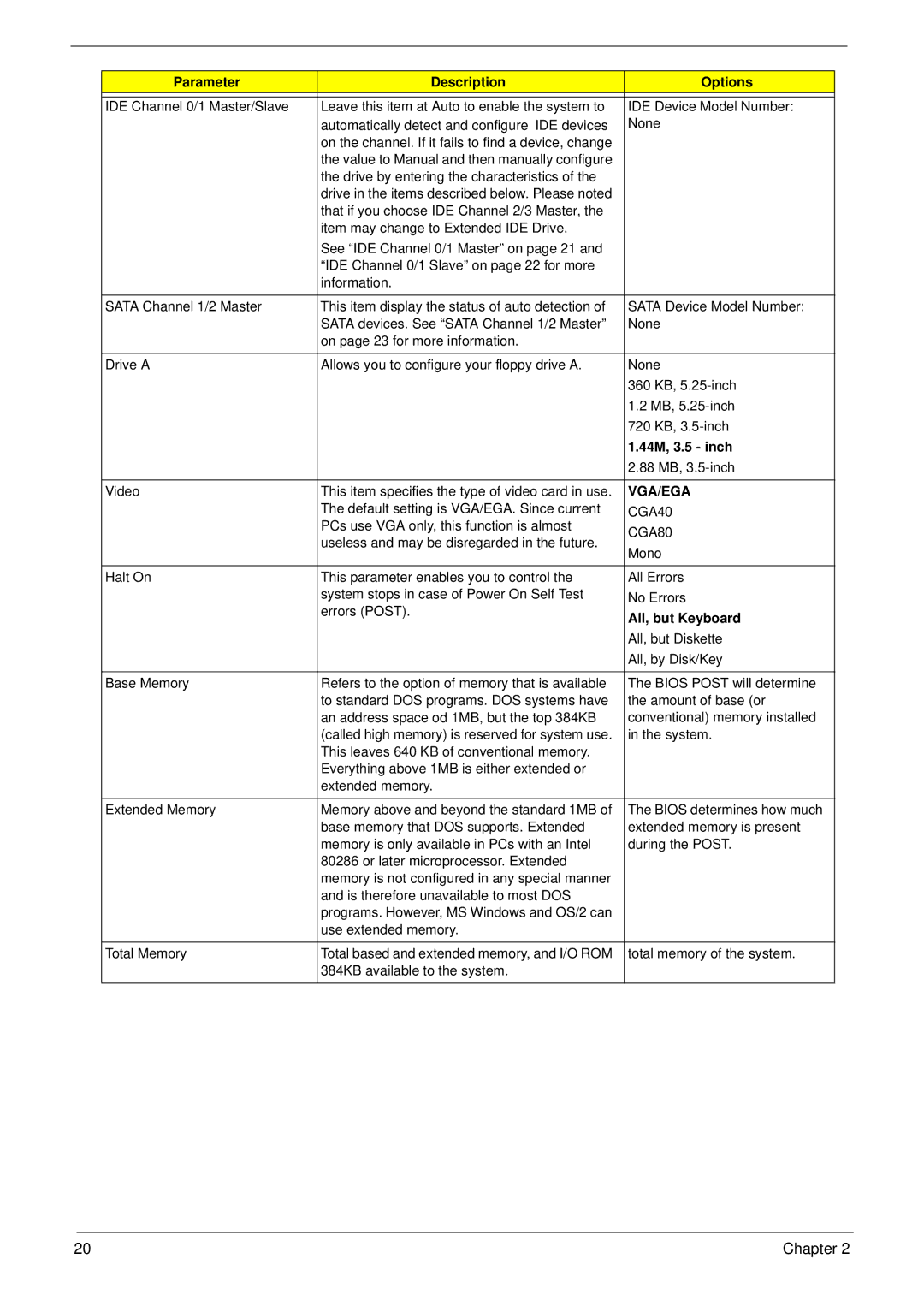
Parameter | Description | Options |
|
|
|
IDE Channel 0/1 Master/Slave | Leave this item at Auto to enable the system to | IDE Device Model Number: |
| automatically detect and configure IDE devices | None |
| on the channel. If it fails to find a device, change |
|
| the value to Manual and then manually configure |
|
| the drive by entering the characteristics of the |
|
| drive in the items described below. Please noted |
|
| that if you choose IDE Channel 2/3 Master, the |
|
| item may change to Extended IDE Drive. |
|
| See “IDE Channel 0/1 Master” on page 21 and |
|
| “IDE Channel 0/1 Slave” on page 22 for more |
|
| information. |
|
|
|
|
SATA Channel 1/2 Master | This item display the status of auto detection of | SATA Device Model Number: |
| SATA devices. See “SATA Channel 1/2 Master” | None |
| on page 23 for more information. |
|
|
|
|
Drive A | Allows you to configure your floppy drive A. | None |
|
| 360 KB, |
|
| 1.2 MB, |
|
| 720 KB, |
|
| 1.44M, 3.5 - inch |
|
| 2.88 MB, |
|
|
|
Video | This item specifies the type of video card in use. | VGA/EGA |
| The default setting is VGA/EGA. Since current | CGA40 |
| PCs use VGA only, this function is almost | CGA80 |
| useless and may be disregarded in the future. | |
| Mono | |
|
| |
|
|
|
Halt On | This parameter enables you to control the | All Errors |
| system stops in case of Power On Self Test | No Errors |
| errors (POST). | All, but Keyboard |
|
| |
|
| All, but Diskette |
|
| All, by Disk/Key |
|
|
|
Base Memory | Refers to the option of memory that is available | The BIOS POST will determine |
| to standard DOS programs. DOS systems have | the amount of base (or |
| an address space od 1MB, but the top 384KB | conventional) memory installed |
| (called high memory) is reserved for system use. | in the system. |
| This leaves 640 KB of conventional memory. |
|
| Everything above 1MB is either extended or |
|
| extended memory. |
|
|
|
|
Extended Memory | Memory above and beyond the standard 1MB of | The BIOS determines how much |
| base memory that DOS supports. Extended | extended memory is present |
| memory is only available in PCs with an Intel | during the POST. |
| 80286 or later microprocessor. Extended |
|
| memory is not configured in any special manner |
|
| and is therefore unavailable to most DOS |
|
| programs. However, MS Windows and OS/2 can |
|
| use extended memory. |
|
|
|
|
Total Memory | Total based and extended memory, and I/O ROM | total memory of the system. |
| 384KB available to the system. |
|
|
|
|
20 | Chapter 2 |
